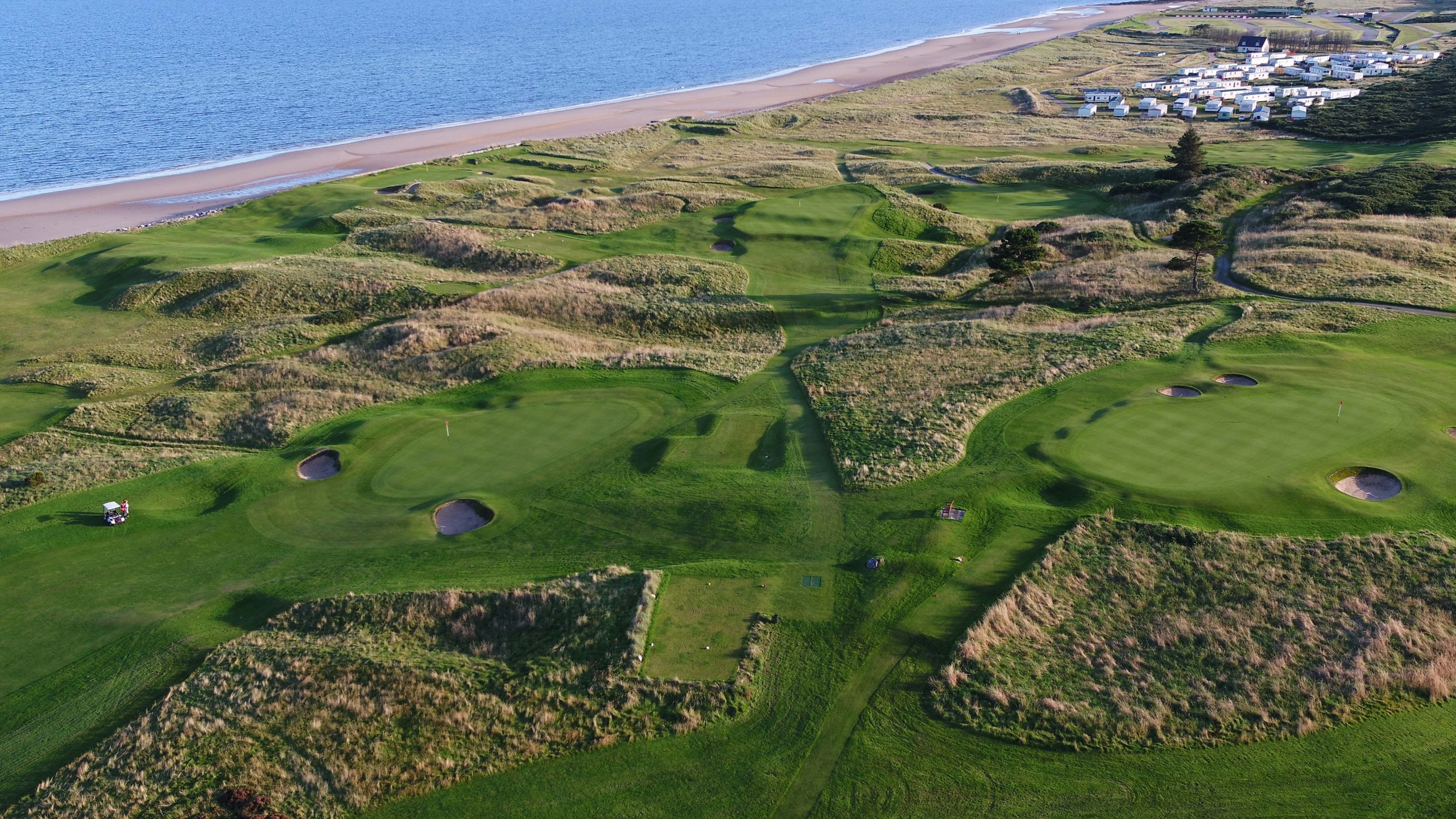One of Scotland’s highest regarded golf courses is commemorating 10 years since it faced the biggest challenge in its 135-year history.
In December 2012, Golspie Golf Club was overcome by extreme weather conditions, as strong winds and saltwater from the North Sea battered the links course over three days. Now, a decade later, staff and members at the club are reflecting on the challenge they faced – and the strong position the club now finds itself in after being rebuilt by the community.
Golspie Golf Club’s Rod Houston said: “When the water broke over the batteries at the seafront, the course was almost decimated. The damage extended over 150 yards inland into the course, rendering many of the holes completely unplayable – and in some cases, almost impossible to even find.”
In the week after the storm broke, over 3.5 tons of rubble was removed by hand from the fifth green alone – under the watchful eye of the club’s head greenkeeper at the time, Alexander MacDonald. In total, over 3,500 tonnes of debris was cleared from the course.

Houston continued: “As we assessed the damage, we realised how important it was to us and the community that we handled the restoration ourselves – ensuring that the course retained the spirit, heritage and playability we are so proud of in our corner of the Highlands.
“By hiring additional staff and purchasing equipment, we knew that we were futureproofing the club, and equipping ourselves with the skills and tools we would need if we ever faced such an event again in the future.
“We raised around £200,000 to complete the restoration, and had the full support of the Highland Council, our members and staff, and the local community. The people of Golspie village – and neighbouring areas – were incredible in their support, and in total over 100 volunteers helped to restore the course to its former glory.”

Incredibly, restoration took just a few months – and by mid-2013 the course, which is located on Scotland’s north east coast, half way between Dornoch and Brora, was back in operation.
Houston explained: “Alexander MacDonald was truly heroic in his efforts to preserve and restore the course. He and his expanded team worked hard to keep a nine-hole course going while simultaneously working on the holes damaged by the floods, and we were back in action in no time at all.”
Now, 10 years later, the course and club are in the best condition they’ve ever been in – even though the last of the rubble was cleared from the rough just last winter.
A review this year by Golf Monthly proclaimed that hole four is “a brilliant par-5 of 522 yards played along the edge of the beach. With a swale short, it’s a good tactical test.” That it could be played at all, after the storm overwhelmed a row of vertical railway sleepers along the shore and washed the grass away, is a testament to the hard work of MacDonald and his greenkeeping team.

And MacDonald’s work preserving the course has been carried on by current head greenkeeper Muir Ross, who has helped usher in a new era of success.
“Last year we hired our first golf pro in 50 years,” said Houston. “Jordan Ferrie joined us in 2021 and she has been a fantastic ambassador for the course, especially as golfers returned to the region after the pandemic. Every year we welcome over 3,500 golfers from around the world. It’s amazing to think about the strong position we are in now, considering the damage done during that storm 10 years ago.”
Golspie Golf Club was founded in 1889 in the shadow of the imposing Ben Bhraggie. Within a few short years it was hailed as one of Scotland’s golfing highlights – a reputation it continues to enjoy to this day, thanks in part due to improvements made by acclaimed course architect James Braid in the mid-1920s. Today Golspie welcomes thousands of members and visitors from across the globe every year, to enjoy its unique blend of links and heathland holes and the warm welcome the village is famous for.

